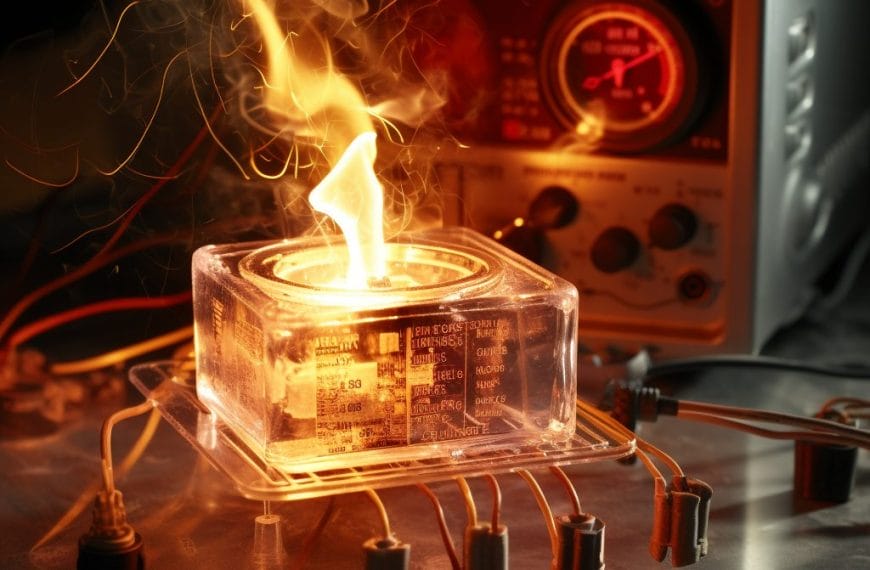Quick Answer: Atomic clocks keep time by counting the ultra-precise oscillations of atoms, usually cesium-133. By tuning microwave radiation to match an atom’s unique resonance frequency, these clocks achieve astonishing accuracy—often losing less than a second in millions of years.
Opening the Atomic Stopwatch
Imagine a stopwatch that never drifts, no matter the weather, altitude, or age—it just keeps ticking at the exact same pace. That’s essentially what an atomic clock does. Unlike mechanical gears or vibrating quartz crystals, its “pendulum” is a single atom’s natural rhythm, measured with microwaves and tuned with quantum-level precision.

The key idea is this: atoms act like perfectly regular drummers, keeping an unchanging beat. Harnessing that beat is the secret behind the most accurate timekeeping devices humans have ever built.
The Resonance Principle: Atoms as Perfect Oscillators
The foundation of atomic clock technology is the resonance frequency of an atom. Each type of atom, such as cesium or rubidium, has electrons that can only exist in specific energy levels. When an electron “jumps” between these levels, it absorbs or emits electromagnetic radiation at a specific, unchanging frequency.

- For the standard cesium-133 clock, this resonant frequency is exactly 9,192,631,770 cycles per second.
- By counting these cycles, we define one second in the International System of Units (SI).
- Because these frequencies are constant everywhere in the universe, they make for a perfect frequency standard.
Think of it like a swing that is pushed at just the right timing: it will move smoothly and consistently. If you push at the wrong moment, it doesn’t work as well. For atoms, “pushing” is applying microwave radiation at the right frequency to trigger an atomic transition.
Building the Atomic Beam: Preparing and Filtering Atoms
In a cesium beam clock, the process begins with heating cesium atoms in an oven to create a beam. This beam includes atoms in two slightly different hyperfine energy states.

Here’s the preparation sequence:
- Heat cesium to produce a cloud of atoms.
- Use a magnetic field to filter out one energy state, leaving only the other in the beam.
- Direct this purified beam into the clock’s measurement chamber.
This filtering step ensures the clock starts with atoms in the proper “starting position,” ready to respond to carefully tuned microwave radiation.
Locking onto the Frequency: Resonant Cavity and Detection
Next, the beam of atoms travels through a resonant cavity—a chamber designed to bombard the atoms with microwave radiation close to their transition frequency.

- When the microwave frequency is exactly right, the maximum number of atoms will change state.
- Another magnetic field separates atoms that have switched states from those that haven’t.
- A detector counts the transitioned atoms, measuring how “on target” the radiation is.
This step is like a radio dial locking onto the strongest possible station signal—the clock “locks” to the atom’s own natural station: its resonance frequency.
The Feedback Loop: Steering the Quartz Oscillator
An atomic clock’s feedback loop is where electronics meet quantum precision. The actual microwaves come from a quartz oscillator, similar in principle to what’s in wristwatches, but here it’s constantly corrected by the atoms.

The loop works like this:
- The detector tells the system whether the current frequency is producing enough state changes.
- If the number is too low, the quartz frequency is nudged up or down with tiny adjustments using the piezoelectric effect.
- This keeps the microwaves locked to the atom’s ideal frequency, eliminating drift.
The result? A quartz oscillator that counts perfect atomic beats, enabling precision timekeeping at the highest level.
Types and Real-World Uses: From Cesium Beams to GPS
Not all atomic clocks are built the same. Different designs serve different needs:
- Cesium beam clocks – The primary standard for defining the second, with excellent long-term accuracy.
- Rubidium clocks – Smaller and more common in commercial devices; slightly less accurate than cesium but more compact.
- Hydrogen masers – Offer exceptional short-term frequency stability, often used in scientific laboratories.
Applications are everywhere—though often invisible to us:
- GPS satellites use atomic clocks to pinpoint locations by timing signals to billionths of a second.
- Telecommunications networks rely on them for precise clock synchronization.
- Scientific experiments depend on atomic time for accurate measurements and comparisons across continents.
Final Tick: The Ubiquitous Rhythm of Atomic Time
From guiding your phone’s GPS to enabling high-speed internet, the pulse of atomic clocks quietly shapes modern life. Each second that passes is not just an approximation—it’s a count of exact atomic oscillations, faithfully replicated across the globe.
By anchoring time to the unwavering beat of atoms, we’ve built a clock that doesn’t just keep time—it defines it.













